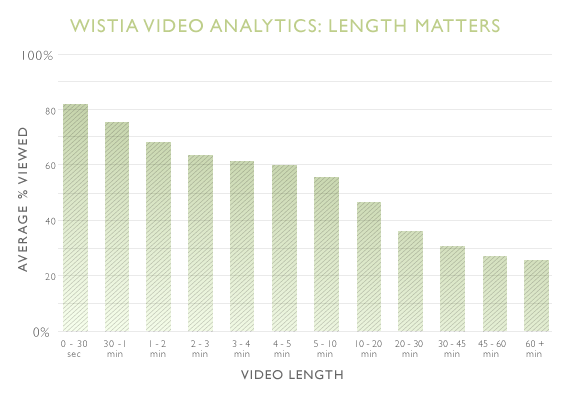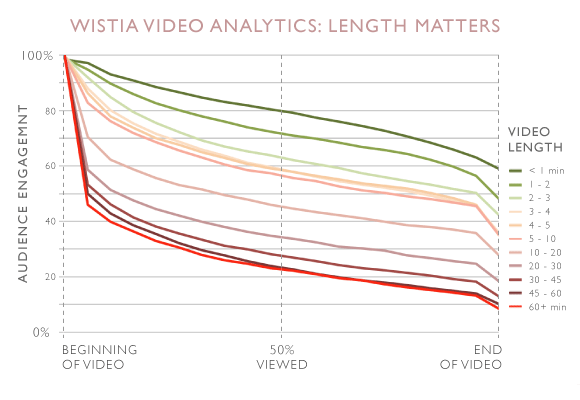*To see the source for this research, see at the very bottom of this post
It all begins with…
Every creative project we start, big or small, begins with a creative brief. It’s not relevant if the client is new or an existing client. Each video we create is unique with its own goals and purpose.
A good creative brief allows us to understand exactly what’s going on inside your head. It allows you to put your thoughts down onto paper and for us to interpret it into beautiful content.
Our creative brief is a list of questions that all serve a certain purpose.
The “What?”
What’s the video’s purpose ? It might sound silly but it’s a basic question that we need to understand. We need to know every detail about your product or service and in as much detail as possible.
Also we need to understand how you plan to use the video ? Some videos have very specific usage. Where the video will be viewed by the end user helps us determine how focused the content needs to be as well as how long the overall video is to hold their attention and keep their curiosity piqued. (See chart below)

The above graph sums it up very clearly:
- In a video under 30 seconds long, there is about 82% of your audience willing to keep watching, or in other words, roughly 18% of your audience is clicking away from the video before the 30 sec mark.
- At 30-60 seconds roughly a quarter of your audience is leaving before the end the first minute.
- and at 1-2 minutes over 30% are dropping off.
“Your business video should be built to serve a specific purpose.“
The longer you make it, the less people will watch it to completion. So rather than cramming everything about your product into one video, we advise you to break up that video into snackable content that will keep your audience engaged.

What this is showing, is that most of the audience is deciding in the first few seconds whether or not to watch your video and once they make the commitment, the engagement sort of levels off.
The other dip you’ll notice is toward the end when the videos are wrapping up. This can probably be attributed to meandering wrap ups and summarizations at the end of videos. To avoid this, in addition to making sure you keep your videos brief and to the point, keep your call-to-action at the end of the video direct and to the point. In other words be direct with what you want the viewer to take for a next step whether that is to sign up for a demo, make a donation or to watch another video that takes a deeper dive into the product offering.
Thanks to Wistia doing the heavy lifting putting these statistics together by compiling millions of data points from videos they are hosting over the last couple years. You can read the full report on the Wistia website.
Who is the audience?
Before we shoot the first pixels we really need to understand who’s going to watch or ultimately who’s making the decision to buy ?
So the video needs to be geared specifically to that audience persona. For instance, let’s say you offer a service that solves a technically challenging problem. The engineers get it, but they don’t make the purchasing decision, that happens to be made by the CEO. The CEO has a basic understanding of the problem but not to the depth of the engineers.
You need to break down your message so ultimately the CEO gets it. And the CEO won’t watch your whole video, his time is precious. so based on the research mentioned above, we can assume that the more technical info could be kept for the second half of the piece. (The engineers will understand the benefits because they are more technically proficient, you can always gear other more snackable technical content for them.)
By identifying this audience persona it also helps pinpoint other things like aspects of the visuals, the music that we use and who the “voice” of your product or service is. (Is it male or female? Is the tone conversational or more informational? etc…)
Once we know your audience, we can start getting “inside their heads” and crafting a video experience that would be the most appealing to them.
What does the viewer do next ?
More specifically, we’re looking for what metrics you’ll be tracking to evaluate the videos success and want to make sure we’re creating a powerful call-to-action that is going to help you meet these goals. We may even recommend a video hosting solution to you that would best help you achieve the success you are looking for.
Another aspect we’re identifying in this section is “are there more than one call-to-action needed?”. For instance, if the viewer is watching your video on YouTube, the call-to-action might be to get them to your website where you can control the user experience.
Otherwise if they are left to their own devices on YouTube they are more likely to watch a competitor’s video or possibly even a video of a cat playing tennis!
By comparison, if they are watching a video on your website, your call-to-action shouldn’t be to visit your website, they’re already there. On your website your call-to-action would be more direct by having them sign up for a free webinar, request a consultation or sign up a free trial.
The creative brief is what we rely on to get up to speed and understand what it is we’re making a video about. In most cases our entire process is completed in 4-6 weeks, which means in most cases we get about a week to understand as much about the product or service as we can.
The client by comparison has been working on their product or service offering for months or even years. So you can see why the creative brief is so critical.
Finally I nice little infographic to summarise it all.


